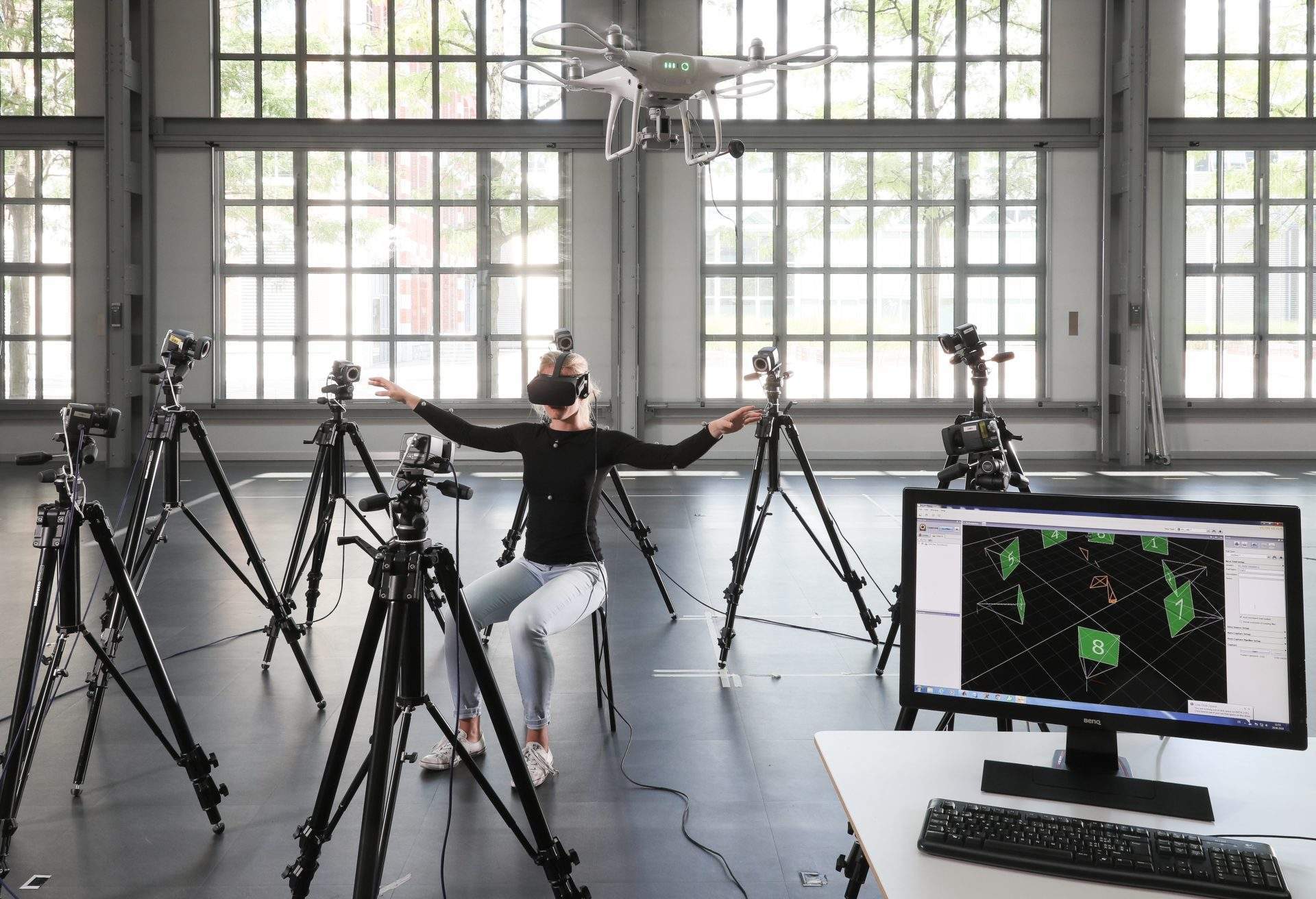
Scientists looking at the most efficient approach to drone control have found that using just your torso rather than a hand-held joystick makes for more effective and immersive drone piloting.
Scientists at Ecole Polytechnique Fédérale de Lausanne (EPFL) found that drone pilots wearing a first-person view (FPV) headset were able to easily control a drone by body movements alone with just four markers located on their torso. The approach also keeps the head free, allowing the pilot to look around and use the drone in a manner more like a bird.
As drones are increasingly being used for a host of applications – requiring their use by individuals who have not operated drones previously – it is thought this method of control would provide more efficient control.
“Our aim was to design a control method which would be easy to learn and therefore require less mental focus from the users so that they can focus on more important issues, like search and rescue,” said study lead author Jenifer Miehlbradt of EPFL’s Translational Neuroengineering Laboratory.
“Using your torso really gives you the feeling that you are actually flying. Joysticks, on the other hand, are of simple design but mastering their use to precisely control distant objects can be challenging.”
How well do you really know your competitors?
Access the most comprehensive Company Profiles on the market, powered by GlobalData. Save hours of research. Gain competitive edge.

Thank you!
Your download email will arrive shortly
Not ready to buy yet? Download a free sample
We are confident about the unique quality of our Company Profiles. However, we want you to make the most beneficial decision for your business, so we offer a free sample that you can download by submitting the below form
By GlobalDataDrone control using just the torso
The scientist’s research, which was published today in the journal PNAS, looked at controlling drones with just the body. The researchers used 39 participants to trial the approach, initially starting with 19 markers.
They eventually found that torso control required only 4 markers. It also proved to be more precise and reliable with only minimal training than joystick control.
“Data analysis allowed us to develop a very simple and intuitive approach which could also be used with other populations, machines, and operations,” said Silvestro Micera, Bertarelli Foundation Chair and leader of EPFL’s Translational Neuroengineering Laboratory.
“The approach significantly improves the teleoperation of robots with non-human mechanical attributes.”
The future of drone control
At present the markers are monitored and ‘read’ by a group of cameras surrounding the drone pilot, which are fed to a computer that interprets them into instructions sent to the drone.
However, EPFL is now developing a jacket that will remove the need for external infrastructure, allowing this method of control to be implemented in the field.
Dubbed FlyJacket, it is initially intended to be use in search-and-rescue applications.



